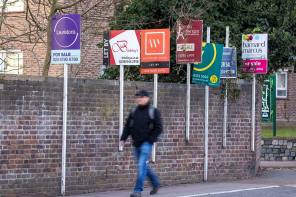

A quarter (25 per cent) of Brits plan to invest in buy-to-lets in the north east to generate income for their retirement compared to just 19 per cent in the south.
According to data from Cornerstone Tax, investors affected by the increase in interest on their mortgages have begun chasing higher rental yields in the north east of England, making it “the buy-to-let investment capital of Britain” due to low house prices and relatively high rent.
The recent increase in mortgage rates and falling real wages has reduced buyer demand, with a 7.5 per cent average drop recorded nationwide.
Traditionally attractive areas of investment, such as the south west and east Midlands, reported that sales are down by 11.4 per cent and 15.3 per cent, according to TwentyCi.
David Hannah, chairman of Cornerstone Tax, said: “The end of tax relief on buy-to-let mortgages, which came into full effect in 2020, coupled with the increasing rates of interest on mortgages, has amplified the blow on landlords’ profit margins, meaning that investors care more than ever about securing higher yields.
“The situation has been particularly exacerbated for houses in multiple occupations – these are landlords who typically include the costs of energy, heating, and other bills into the rent.”
Buy-to-let landlords in the south of the UK have taken the financial brunt of the consecutive rises in interest rates coupled with the increase in inflation of energy bills and general running costs, according to Cornerstone.
The data found that 21 per cent of people in the south west became a landlord without sufficient knowledge and have lost thousands as a result, with a further 26 per cent in the east Midlands also reporting a loss.
Hannah said: “It makes sense that we have seen an exodus of landlords to the north east.
“For many landlords, this is their full-time income being affected and as the data shows across some areas of the South this is becoming increasingly difficult.
“Our data found that just one in five now say their investment has been a profitable one, so it’s vital that prospective landlords do their research before deciding where to invest.”
Data by Hamptons also revealed that just over a quarter (26 per cent) all property purchases in the year to date in this area were from buy-to-let investors.
Cornerstone said the landlord’s exodus to the north was inevitable.
The average cost of a property in the north stands at £178,000 compared to £465,000 across the south of the UK, according to Plumpot.
As a result of lower mortgages, and the promise of higher rental yields, TwentyCI has reported that new rental instructions are up 12 per cent in the north east, versus 6per cent nationally.
Notably, Newcastle was the strongest performing city in the country, with sales up 6.6 per cent compared to the start of 2019.
Cornerstone’s data points out that this is only set to increase with 28 per cent planning to invest in property in the city to generate income for their retirement.
sonia.rach@ft.com
What do you think about the issues raised by this story? Email us on ftadviser.newsdesk@ft.com to let us know



